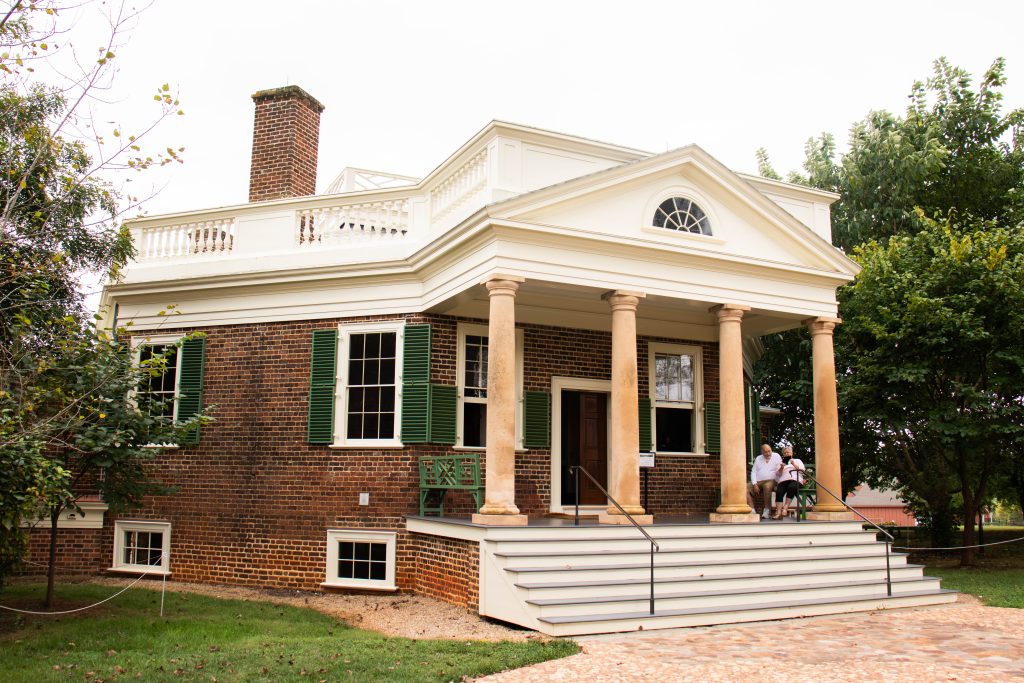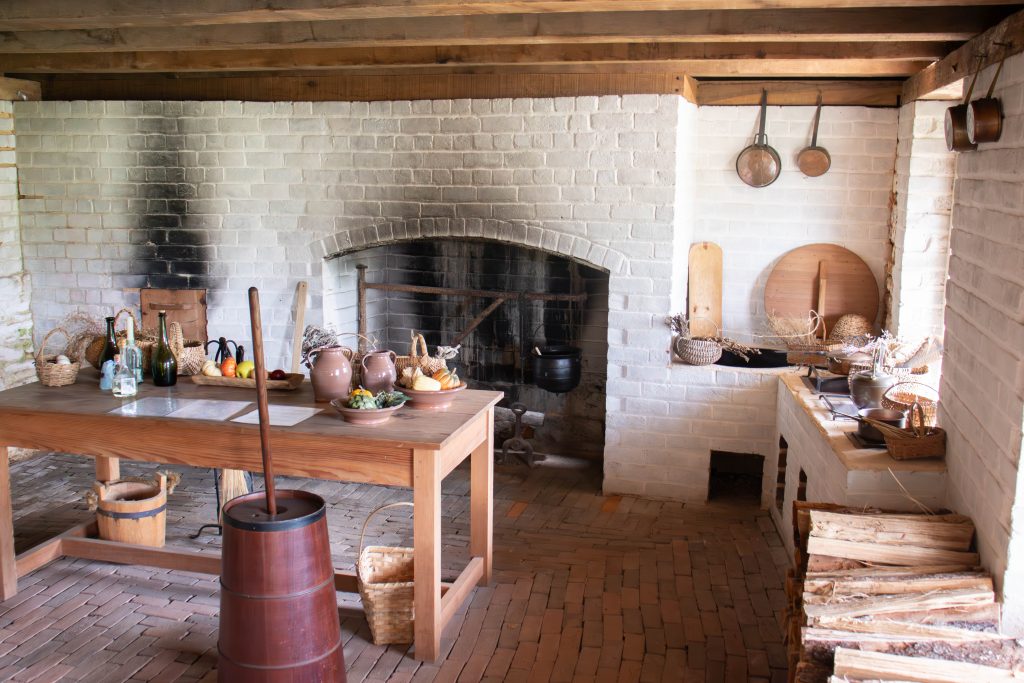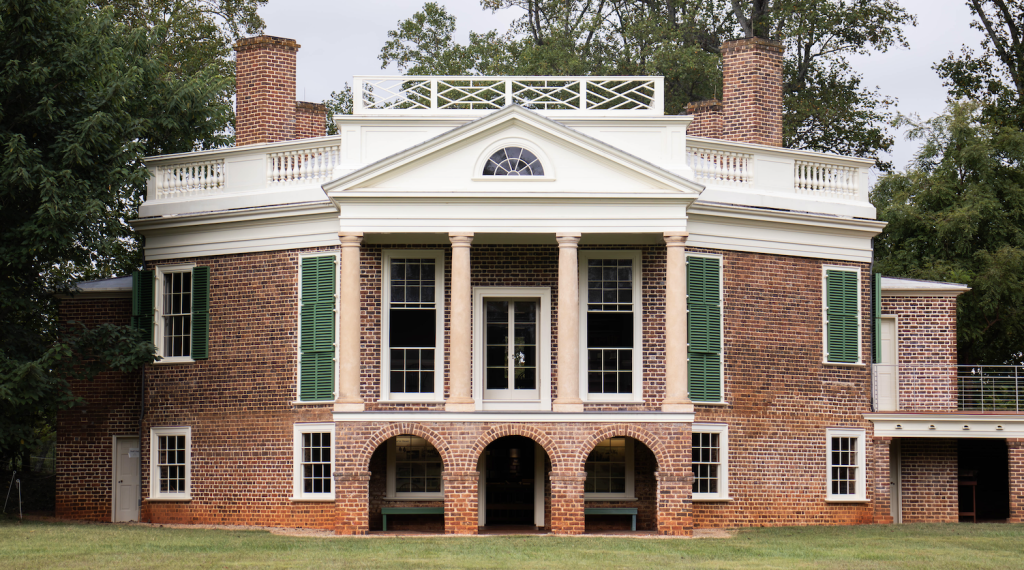With an octagonal structure, neo-classical porticos, stately white Tuscan columns and French-inspired windows, Thomas Jefferson’s Poplar Forest has been recognized as one of the most notable archaeological and historical gems in rural Forest, Virginia.
According to poplarforest.org, the retreat is neatly positioned at the end of a 2.2-mile-long Poplar Forest Parkway and includes over 600 acres of land and trails for visitors to explore. The property has plenty for visitors to survey both inside the magnificent estate and outside because of the abundant amount of excavation sites and artifacts for visitors to see, especially in the Poplar Forest Archaeology Lab.
According to Mary Massie, director of programs and education at Poplar Forest, Thomas Jefferson “inherited the property through his father-in-law, John Wayles, in 1773 and designed the retreat home beginning in 1806.”
Massie explained that Jefferson stepped down from the presidency in 1809 and used his retreat for small intervals of two weeks to sometimes longer vacations lasting a few months. Although the retreat was Jefferson’s vacation getaway, he also had used it as a plantation to grow crops like wheat and tobacco.
“As a working plantation, approximately 94 enslaved women, men and children lived and worked the property under the supervision of overseers,” Massie said.
Massie continued to explain that Francis Epps, Jefferson’s grandson, took over Poplar Forest after Jefferson stopped going to the property in 1823. The property was sold in 1828 and was no longer owned by Jefferson’s relatives.

“It stayed in private ownership until 1983 when the Corporation for Jefferson’s Poplar Forest formed with the mission to preserve and restore the house and grounds back to their Jefferson-era appearance,” Massie said.
According to Massie, the Corporation studied and analyzed the initial structure of the property to better understand how to bring Poplar Forest back to how it originally would have looked when Jefferson first constructed it.
“We opened to the public regularly in 1986 and since then, we have been actively restoring the house and property in full view of the public to educate them in historic preservation and restoration,” Massie said.
An article on poplarforest.org states that not only does the Corporation for Poplar’s Forest seek to safeguard the property’s condition, but it has also provided numerous opportunities for professional and aspiring archaeologists to have hands-on experience by digging into the property’s excavation sites and taking a peek at the wide array of the estate’s mysterious artifacts. According to the Corporation for Poplar Forest, archaeologists have discovered over 300,000 artifacts on the property. The initial discoveries began back in 1986, but recent excavations are still being done.
Currently, the Corporation regularly conducts tours of the archaeology lab and numerous digging spots. Tickets and reservations can be purchased through the Corporation’s website at poplarforest.org.
“Our archaeology department is currently doing excavations around the 1857 Slave Dwelling to better understand the structure and the people who lived in the building from the mid-19th century until the late 20th,” Massie explained.

The archaeology department is also currently conducting an investigation for “ornamental tree clumps” and “two oval flower beds” from the early 1800s. The Archaeology Department hopes to clearly excavate these two areas of the property so that they can restore the garden and plant new flowers and trees. According to Massie, the Corporation has internship opportunities in the archaeology department for students.
In conjunction with the Corporation’s immersive archaeological ventures, there are also several programs for members of the community to participate in including a Fall Harvest Dinner, “Jefferson & Adams” (a play by Howard Ginsberg) and an event put on by the African American Advisory Group.
For those who may wish to have a deeper look inside the property’s main building, Massie explained that a docent-guided tour or self-guided tour via an app may be a good option.
Those wanting a self-guided tour option can peek inside the Wing of Offices, the 1857 Slave Dwelling or even a slave-quarter site.
Each of these activities allows members of the public to enjoy the wide array of Poplar Forest’s historical heritage. Whether it be through analyzing artifacts, walking through Jefferson’s retreat, or enjoying an educational program, there is something for every historian, which is a large part of the Corporation’s primary goal.
“My personal goal is for visitors to leave our site with a true sense of what life was like for all the people who were on the property, whether (those people were there) by choice or not,” Massie explained.
Poplar Forest was Thomas Jefferson’s destination getaway, the place he employed his creative genius. It still remains a place for inquiry, research and creative exploration through historical analysis and reenactment because of the Corporation of Poplar Forest’s efforts.
“Our mission is to tell the full story of Poplar Forest, including all who lived and worked on the site,” Massie said.
Davis is a feature reporter for the Liberty Champion
